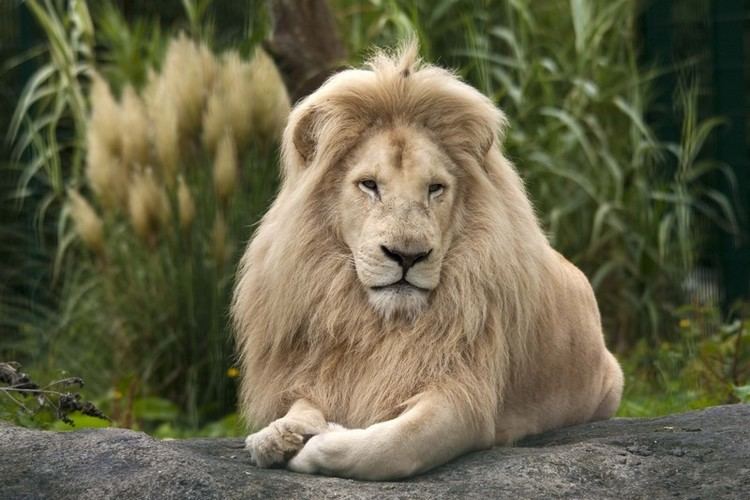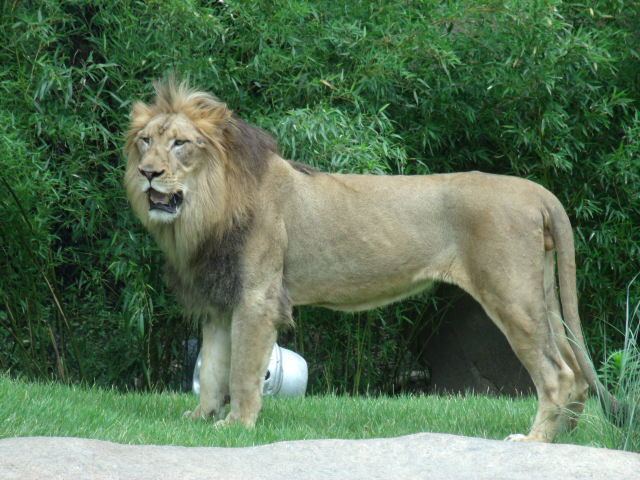Kingdom Animalia Order Carnivora Genus Panthera Higher classification Lion | Phylum Chordata Family Felidae Scientific name Panthera leo krugeri Rank Subspecies | |
 | ||
Similar Lion, Felidae, Cape lion, Southwest African lion, West African lion | ||
Transvaal lion
The Transvaal lion (Panthera leo krugeri), also known as the Southeast African lion, is a subspecies of the lion that reportedly lives in Southern Africa, including Kruger National Park and Hlane Royal National Park. Kalahari lions may be either Panthera leo krugeri or Panthera leo bleyenberghi. It is named after the Transvaal region in South Africa.
Contents
- Transvaal lion
- Evolutionary history
- Physical characteristics
- White lion
- Habitat and distribution
- Ecology and behavior
- Conservation status
- Introduction projects
- References

Evolutionary history
A phylogeographic analysis based on mtDNA sequences of lions from across their entire range indicates that Sub-Saharan African lions are phylogenetically basal to all modern lions. This suggests an African origin of the evolution of modern lions, with a probable center in Eastern–Southern Africa, from where lions migrated to West Africa, eastern North Africa and Asia. Modern lions are related to prehistoric cave lions, such as the Upper Pleistocene European cave lion.

According to recent genetic research, the extinct 'black-maned' Cape lion, formerly described as a separate subspecies, is not significantly different from other Southern African lions. Therefore, the Cape lion may have represented the southernmost population of the Transvaal lion, or it was closely related to Kalahari lions.
Physical characteristics

The male usually has a well-developed mane. Most of them are black-maned as well. Males are around 2.6–3.2 m (8.5–10.5 ft) long including the tail. Females are 2.35–2.75 m (7.7–9.0 ft). Generally, males weigh 150–250 kg (330–550 lb), while the females weigh 110–182 kg (243–401 lb). They have a shoulder height of 0.92–1.23 m (3.0–4.0 ft).

In 1936, a man-eating lion shot by Lennox Anderson, outside Hectorspruit, Eastern Transvaal, weighing about 313 kg (690 lb), was the heaviest wild lion on record (Campbell, 1937). In addition, male and female lions in Zimbabwe, the Kalahari and Kruger Park reportedly average around 189.6 kg (418 lb) and 126.9 kg (280 lb), respectively. These measurements are greater than those of the average weights of East African lions, which appear to be bigger than Central-West African lions, and Asiatic lions appear to be similar in size to Central African lions. Male Asiatic lions weigh 160–190 kg (350–420 pounds), and females weigh 110–120 kg (240–260 pounds) (Nowell and Jackson, 1996). For these reasons, and that the longest wild lion reportedly was an Angolan lion (Panthera leo bleyenberghi), Transvaal and Katanga lions appear to be the largest of the species Panthera leo, in the wilderness of Africa and the Earth, and amongst the World's biggest cats.
White lion
White lions are actually a color mutation of the Transvaal lion. Leucism occurs only in this type of lion, but is quite rare. They are found in a few wildlife reserves and mostly in zoos worldwide.
Habitat and distribution
Transvaal lions live in the savannah, grasslands and semi-arid regions. The Transvaal lion is the southernmost African lion, ranging from southern Namibia (if one were to consider Kalahari lions as being of this subspecies) to southeastern Mozambique.
Ecology and behavior
Transvaal lions feed on herbivorous mammals such as zebras, African buffaloes, wildebeests, warthogs and blesboks. They might prey on larger animals like Southern white rhinos, South African giraffes and South African ostriches, on certain occasions.
Conservation status
There are more than 2000 lions of this subspecies in the well-protected Kruger National Park. In addition about 100 lions are registered under the name P. l. krugeri by the International Species Information System. These animals are derived from animals captured in South Africa.
Introduction projects
On the 28th of June, 2015, the African Parks Network relocated lions from Kwa-Zulu Natal, South Africa, to Akagera National Park in Rwanda. They opted to transfer these lions there because they could not get the Masai lion from Tanzania. The Masai lion was reportedly the subspecies which originally occurred in the park.
